#farm solar
Text
Best Farm Security
youtube
#ReefDVMs#RMSpeltz Farm#solar light#best solar light#dyi solar light#solar street light#best security on a farm#security farm#security light#solar#farm light#farm solar#amazon light#cheap solar light#best yard light#street lamp#parking lot light#parking lot solar light#bright solar light#bright security light#bright farm light#barn light#barn solar light#installing solar light#street light#Youtube
0 notes
Link
Sheep living among rows of solar panels spend more time grazing, benefit from more nutritious food, rest more and appear to experience less heat stress, compared with nearby sheep in empty fields.
Earlier research suggested that agrivoltaic farms – which combine grazing animals with solar panels – offer more efficient renewable energy at lower overhead costs, as well as reducing wildfire risks. The latest findings show that the practice is also good for animal welfare, providing further evidence for a win-win situation, says Emma Kampherbeek, who carried out the work while at Wageningen University in the Netherlands.
[...]
As for pasture quality, the nitrogen content was higher and carbon content lower in the solar panel fields, suggesting that the vegetation in this pasture – which was greener – was more nutritious and more easily digestible. That might be due to the reduced exposure to intense solar rays and to dew dripping off the panels, providing much-needed moisture, she says.
The results are likely to be even more pronounced in warmer seasons, she adds. Additional research is under way to analyse the data taken from temperature recordings during her study.
Sheep make good candidates for agrivoltaics because they are efficient foragers, keeping weeds off solar panels, and are small enough to pass under the panels, says Kampherbeek. And, unlike goats, they don’t chew the electrical wires.
The findings strongly suggest that solar power centres should be designed with a partner animal species in mind, she says.
9K notes
·
View notes
Note
hey, how do you cope with people saying we only have a small amount of time left to stop the worst effects of climate change? no matter how hopeful and ok i am, that always sends me back into a spiral :(
A few different ways
1. The biggest one is that I do math. Because renewable energy is growing exponentially
Up until basically 2021 to now, all of the climate change models were based on the idea that our ability to handle climate change will grow linearly. But that's wrong: it's growing exponentially, most of all in the green energy sector. And we're finally starting to see proof of this - and that it's going to keep going.
And many types of climate change mitigation serve as multipliers for other types. Like building a big combo in a video game.
Change has been rapidly accelerating and I genuinely believe that it's going to happen much faster than anyone is currently predicting
2. A lot of the most exciting and groundbreaking things happening around climate change are happening in developing nations, so they're not on most people's radars.
But they will expand, as developing nations are widely undergoing a massive boom in infrastructure, development, and quality of life - and as they collaborate and communicate with each other in doing so
3. Every country, state, city, province, town, nonprofit, community, and movement is basically its own test case
We're going to figure out the best ways to handle things in a remarkably quick amount of time, because everyone is trying out solutions at once. Instead of doing 100 different studies on solutions in order, we get try out 100 (more like 10,000) different versions of different solutions simultaneously, and then figure out which ones worked best and why. The spread of solutions becomes infinitely faster, especially as more and more of the world gets access to the internet and other key infrastructure
4. There's a very real chance that many of the impacts of climate change will be reversible
Yeah, you read that right.
Will it take a while? Yes. But we're mostly talking a few decades to a few centuries, which is NOTHING in geological history terms.
We have more proof than ever of just how resilient nature is. Major rivers are being restored from dried up or dead to thriving ecosystems in under a decade. Life bounces back so fast when we let it.
I know there's a lot of skepticism about carbon capture and carbon removal. That's reasonable, some of those projects are definitely bs (mostly the ones run by gas companies, involving carbon credits, and/or trying to pump CO2 thousands of feet underground)
But there's very real potential for carbon removal through restoring ecosystems and regenerative agriculture
The research into carbon removal has also just exploded in the past three years, so there are almost certainly more and better technologies to come
There's also some promising developments in industrial carbon removal, especially this process of harvesting atmospheric CO2 and other air pollution to make baking soda and other industrially useful chemicals
As we take carbon out of the air in larger amounts, less heat will be trapped in the atmosphere
If less heat is trapped in the atmosphere, then the planet will start to cool down
If the planet starts to cool down, a lot of things will stabilize again. And they'll probably start to stabilize pretty quickly
#Anonymous#ask#me#carbon removal#carbon sequestration#carbon emissions#air pollution#forests#afforestation#wetlands#regenerative farming#regenerative agriculture#agriculture#renewable energy#renewable electricity#solar power#wind power#climate change#climate anxiety#climate resilience#good news#hope#hope posting
5K notes
·
View notes
Text
Since yall went so wild over those solar farms here some more--

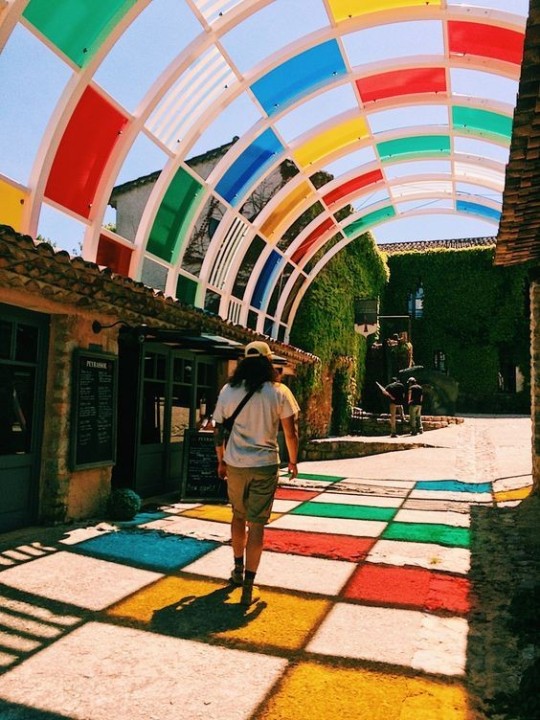

^^some theoretical usage of colorful solar glass

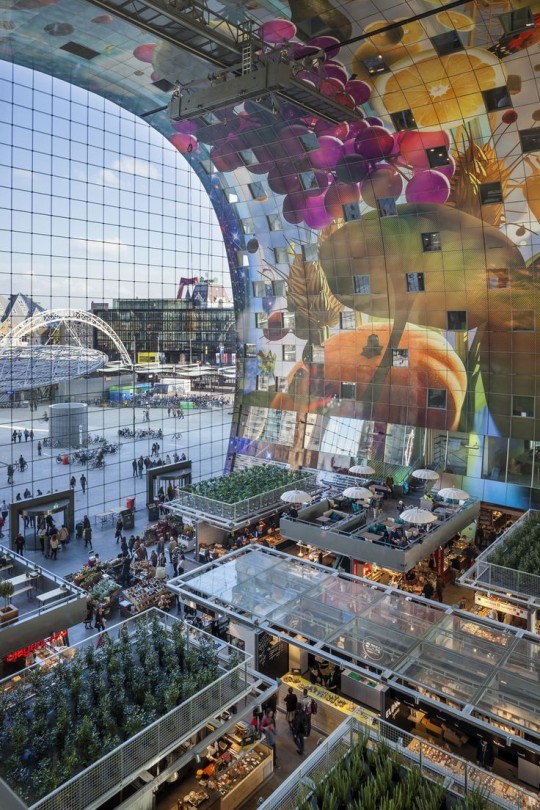
^^Here's some as artwork


^^ some canopy ideas for over plazas/markets
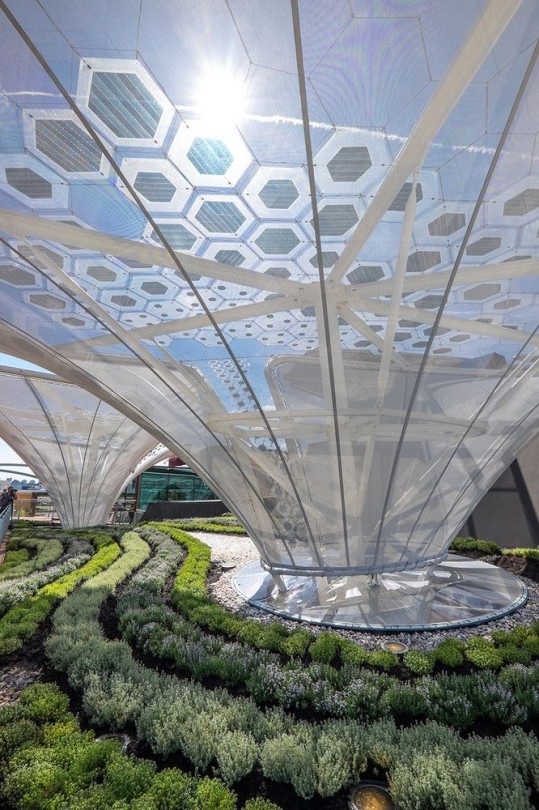

^^And some hybrid Solar/water catching structures as well
2K notes
·
View notes
Text
#good news#environmentalism#science#solar panels#solar energy#solar farms#coal#mountaintop removal#coal mining#kentucky#usa#environment#green energy
54 notes
·
View notes
Text
Insect populations flourish in the restored habitats of solar energy facilities
Pairing solar energy facilities on previously disturbed lands with habitat enhancement sounds like a logical win-win strategy to address energy and biodiversity challenges.
103 notes
·
View notes
Text

"The industrial model of agriculture production begins to look less viable’
In agriculture, growing only one crop – monoculture – has tended to encourage increased output by lowering overall costs. But these so-called economies of scale have brought with them environmental threats resulting from intensive production.
Now, single-crop farming is increasingly an economic risk for producers themselves. In the EU, one in 10 farms followed ecological practices in 2021 – almost double the share a decade earlier. This shows that growing numbers of European farmers are doing their part to preserve biodiversity.
Greater biodiversity can reduce business risks from droughts because a mix of crops diversifies water needs, according to Professor Christoph Scherber, head of the Centre for Biodiversity Monitoring at the Leibniz Institute for the Analysis of Biodiversity Change in Germany. He said crop variation can also lead to general increases in agricultural output.
‘It is important to show that agriculture can support biodiversity but also to acknowledge that biodiversity itself can bring higher production to farming,’ said Scherber, who coordinates BioMonitor4CAP.
#solarpunk#solar punk#indigenous knowledge#community#farming#biodiversity#organic farming#the end of Big Ag#farmer knowledge#science#europe
35 notes
·
View notes
Text
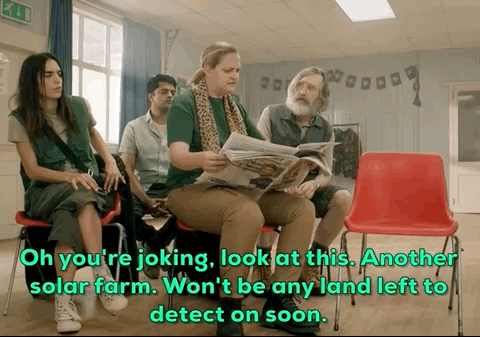
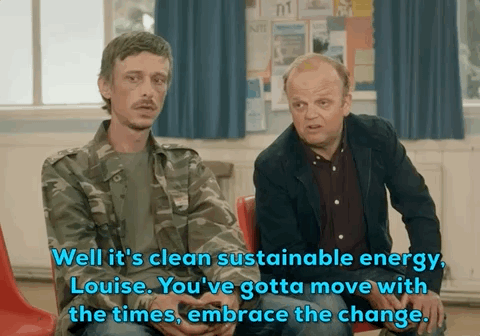






apparently no-one on tumblr is giffing detectorists so i have no choice but to step up
168 notes
·
View notes
Text
Solar Farms Have a Superpower Beyond Clean Energy. (New York Times)
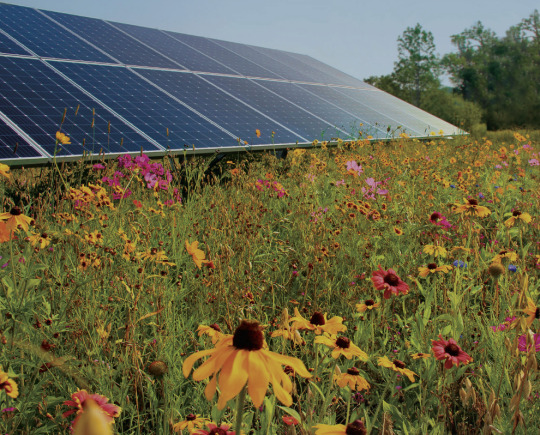
Excerpt from this New York Times story:
It’s not your average solar farm.
The glassy panels stand in a meadow. Wildflowers sway in the breeze, bursts of purple, pink, yellow, orange and white among native grasses. A monarch butterfly flits from one blossom to the next. Dragonflies zip, bees hum and goldfinches trill.
As solar projects unfurl across the United States, sites like this one in Ramsey, Minn., stand out because they offer a way to fight climate change while also tackling another ecological crisis: a global biodiversity collapse, driven in large part by habitat loss.
The sun’s clean energy is a powerful weapon in the battle against climate change. But the sites that capture that energy take up land that wildlife needs to survive and thrive. Solar farms could blanket millions of acres in the United States over the coming decades.
So developers, operators, biologists and environmentalists are teaming up with an innovative strategy.
“We have to address both challenges at the same exact time,” said Rebecca Hernandez, a professor of ecology at the University of California, Davis, whose research focuses on how to do just that.
Insects, those small animals that play a mighty role in supporting life on Earth, are facing alarming declines. Solar farms can offer them food and shelter by providing a diverse mix of native plants.
Such plants can also decrease erosion, nourish the soil and store planet-warming carbon. They can also attract insects that improve pollination of nearby crops.
Pollinator friendly solar can pay off for business, too, potentially saving money and giving projects an edge for approval at a time when communities are increasingly wary of vast solar farms. Developers are taking note.
But there’s a broad spectrum of pollinator friendliness and little agreement on what efforts should count. Standards are often nonexistent. Some big projects are limiting pollinator habitat to tiny corners of their sites. Ecological value varies widely.
Communities may not understand the difference, and corporate marketing may exaggerate. That’s led to accusations of greenwashing.
Pollinator habitat on solar farms is “a serious work in progress,” said Scott Black, executive director of the Xerces Society for Invertebrate Conservation, a nonprofit group that is working on an effort to bring some clarity by certifying solar sites.
“It’s not fair if some people are truly stepping up to do this right and another company is barely doing anything and saying they’re pollinator friendly,” he said.
“If you build it, will they come?” he asks in his research. So far the answer is a resounding yes, if you grow the right plants.
In a study published late last year, his team found that insect abundance had tripled over five years on test plots at two other Minnesota solar sites. The abundance of native bees grew twentyfold.
The results come amid a global decline of wildlife that leaders are struggling to address. Some of the most well-known insect species are in trouble: Later this year, the federal government is expected to rule on whether to place monarch butterflies on the Endangered Species List. North American birds, for their part, are down almost 30 percent since 1970.
But at this site, called Anoka County Solar, acoustic monitoring has documented 73 species of birds, presumably attracted by the buffet of seeds and insects. Some build nests in the structures supporting the panels.
Mammals are showing up, too. Mr. Walston checked a trail camera before leaving, hoping to discover the occupant of a remarkably large burrow: A fox, he thought, or a badger. No luck.
(It’s trickier to make solar sites friendly to large wild animals, in part because developers are nervous to let them near expensive infrastructure, but efforts are underway there, too.)
What makes this meadow possible is the height of the panels. A prairie restoration firm had told ENGIE, the owner and developer, that taller panels would allow for a sharp increase in native vegetation species, providing much more ecological diversity, said John Gantner, the director of engineering and delivery for ENGIE’s smaller-scale sites.
26 notes
·
View notes
Text


Malaysia's Origo Eco is all about replacing non-sustainable items with compostable solutions.
Su clarified that compostable is not the same as biodegradable, which refers to any items that break down into smaller pieces, meaning that they can still leave harmful residue behind.
Compostable items, on the other hand, are specifically organic matter that release good nutrients back into the environment as they break down—such as the RiceStraws.
#solarpunk#solarpunk business#solarpunk business models#solar punk#startup#reculture#organic waste#rice farming waste#compostable materials#materials innovation#malaysia
20 notes
·
View notes
Text
Good News - May 8-14
Like these weekly compilations? Support me on Ko-fi! Also, if you tip me on Ko-fi, at the end of the month I'll send you a link to all of the articles I found but didn't use each week - almost double the content!
1. Critically endangered fish with red hands and 'sad toad face' returned to the wild in Tasmania
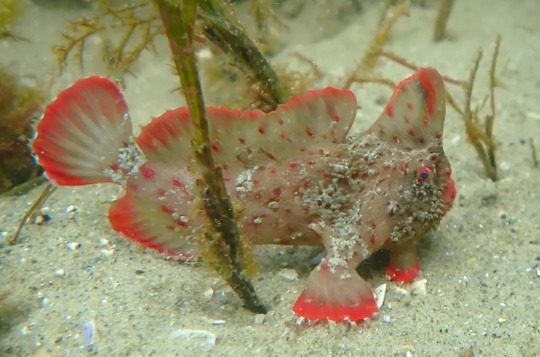
“Conservationists in Australia are celebrating the return of 18 critically endangered red handfish to the sea after they were taken into care at the Institute for Marine and Antarctic Studies (IMAS) in January to protect them from marine heatwaves.”
2. A rare Australian marsupial is being genetically modified to save it from extinction. Here's how

“Scientists are trying to genetically 'edit' the endangered northern quoll to make it resistant to the neurotoxin of the invasive cane toad. […] Now experts in gene-editing […] say they can introduce genetic resistance to the toxin by taking DNA from a species of South American lizard and ‘edit’ that into the cells of a northern quoll. They have already managed to do this with the cells of the closely related dunnart, another endemic marsupial.”
3. More and faster: Electricity from clean sources reaches 30% of global total

“For the first time, 30% of electricity produced worldwide was from clean energy sources as the number of solar and wind farms continued to grow fast. [...] Some of [the past year’s] new demand was for heat pumps, which are an efficient way to both heat and cool buildings, and for electric vehicles. [... Last year was also] the 19th year in a row that solar was the fastest-growing source of electricity generation.”
4. Standards Established To Improve Health Care For Kids With Disabilities
“Developed by a panel of health care experts, adults with disabilities and caregivers, the plan published recently in the journal Pediatrics […] calls for providers to be trained about caring for those with neurodevelopmental disabilities, improved communication with patients and their families and proactive planning in advance of health care encounters to ensure that patients are at ease and provided accommodations.”
5. Working together to better understand Alaska’s beluga whales

“Beluga conservation efforts depend on an accurate count of whales. Indigenous hunters also need to know how many belugas there are so that they [can] decide how many can be safely harvested. That’s why WWF is bringing together Western science and Indigenous knowledge […. U]sing hydrophones to detect belugas in the Yukon River works—and it is an approach that is both cost-effective and non-invasive.”
6. Robotic system feeds people with severe mobility limitations
“Researchers have developed a robotic feeding system that uses computer vision, machine learning and multimodal sensing to safely feed people with severe mobility limitations, including those with spinal cord injuries, cerebral palsy and multiple sclerosis. […] The robotic system successfully fed 13 individuals with diverse medical conditions in a user study spanning three locations[….] Users of the robot found it to be safe and comfortable, researchers said.”
7. Senate Passage of America’s Conservation Enhancement Act a Win for Wildlife

“The Senate’s reauthorization of the America’s Conservation Enhancement (ACE) Act will benefit America’s wildlife and way of life. Led by Senators Tom Carper (D-Del.) and Shelley Capito (R-W.Va.), the bill invests in wetlands and habitat restoration projects across the country as well as strategies to reduce conflicts between wildlife and livestock. […] The passage of this bill shows us once again that Americans are united on the need to protect wildlife and our outdoor heritage,” said Andrew Wilkins, director of land conservation policy at the National Wildlife Federation.”
8. Liberals and conservatives differ on climate change beliefs--but are relatively united in taking action
“The study, led by researchers at New York University, finds that when given the opportunity, liberals and conservatives take action to address climate change at roughly the same levels -- and that this is due to conservatives choosing to take action despite their climate-change beliefs rather than liberals failing to act on theirs.”
9. Democratic state attorneys general are teaming up to protect abortion access

“A group of Democratic attorneys general are working to strengthen state-level protections for abortion, contraception and gender-affirming care. These protections could include expanding the use of so-called “shield laws,” which assert that states where abortion or gender-affirming care are legal won’t cooperate with out-of-state efforts to prosecute anyone who helped provide treatment.”
10. Antwerp gives residents free trees
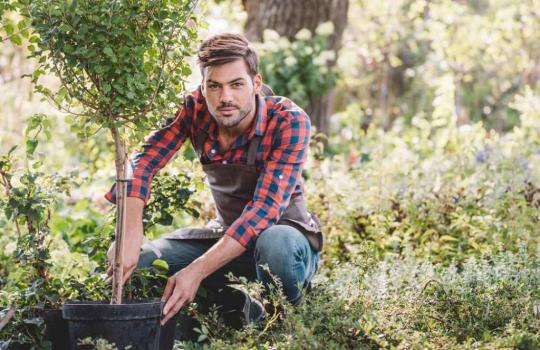
“The Belgian city of Antwerp has 2,000 trees to give away, and it wants to give them to residents to plant in their gardens [...] with the aim of involving citizens in the greenifying process of the city. [...] What’s more, the city website offers practical advice on how to proceed with planting and caring for the tree so that it will meet the standards set by the municipality. [...] The City makes sure to give dead trees a second life by using their wood in the making of natural kids’ playgrounds.”
May 1-7 news here | (all credit for images and written material can be found at the source linked; I don’t claim credit for anything but curating.)
#good news#hopepunk#fish#australia#endangered species#marsupial#gene editing#toad#electricity#clean energy#solar#solar energy#wind farm#wind energy#healthcare#disability#disabled#neurodivergent#alaska#alaska native#native#beluga#robots#wildlife#habitat restoration#politics#climate#climate change#abortion#abortion rights
14 notes
·
View notes
Text
Looking ahead 20 years, many farmers will have to take land out of agriculture to comply with the Sustainable Groundwater Management Act (SGMA), 2014 legislation that has required counties to implement groundwater management plans throughout California. As a result of SGMA, AFT estimates 4 percent, or 212,000 acres, of cropland in the San Joaquin Valley alone could be permanently retired and 27 percent intermittently fallow. Conservation groups hope to see some of that land become part of corridors for native plants, waterways, and wildlife, but farmers are also looking to agrivoltaics opportunities.
Agrivoltaics may also help conserve water. “The shade that is created by the solar panels, in areas that receive more sun than plants need for their photosynthesis, reduces the heat stress on those crops, makes them healthier, and makes them require less water,” Abou Najm said. “Agrivoltaics is more than just a dual production of food and energy on the same plot of land—it maximizes the synergy between the two.”
Agrivoltaics stand to assist Central Valley farms in myriad ways, said Dahlquist-Willard. Larger farms that adopt agrivoltaics could potentially benefit smaller ones by alleviating pressure on regional groundwater. At the same time, farmers with less land are more likely to consider agrivoltaics than converting entirely to solar. “For a small farm—say 10, 20, 30 acres—if you convert your whole farm to solar, you’re quitting farming. Nobody does that when farming is their only source of income,” she said.
Abou Najm published a theoretical study looking at how to grow crops—including lettuce, basil, and strawberries—under solar panels in a way that maximized productivity. He found that the blue part of the light spectrum is best filtered out to produce solar energy, while the red spectrum can be optimized to grow food; this requires a specific type of panel that’s less common but available. His follow-up research involves expanding the types of crops and conducting field trials.
U.C. Davis is filling a necessary gap in California research, though many other studies have been conducted nationally and internationally documenting crop yields under panels. Scientists have found agrivoltaics can improve the efficiency of the panels, and increase water-use efficiency, soil moisture content, and crop yields. In one cherry tomato study, production doubled under the panels and water-use efficiency was 65 percent greater.
Researchers from California Polytechnic State University in San Luis Obispo are also documenting the benefits of grazing under solar panels in California, supporting research worldwide. They are studying the benefits of sheep grazing on two solar installations, Gold Tree Farm and Topaz Solar Farm. There, they’ve found that the solar arrays can offer synergistic benefits for the sheep and the grasslands. Compared with pastures outside the solar panels, the shaded grasses have higher water content, greater nitrogen content, and lower non-digestible fiber.
33 notes
·
View notes
Text
i tried to make a more sentimental post but as someone with the weather (and by extension space weather) as my special interest i am so so so so happy seeing all the posts from people who got to experience this rare solar storm <3 it makes me so happy when people get to witness how beautiful (space) weather can be!!!
#i had a whole anecdote ready about how i got a book about the weather in 2003 in the netherlands bc a hot air balloon knocked over our fence#and how i have been fascinated by the pics from that solar event#(and also by the description of a tornado that hit a farm 1km away from ours in june 2003)#but i am too fried from my job today bc the island shifts are always around 12 hours#but trust me i love the weather and i want to share it with others.... reverse gatekeeping etc etc#i have also been thinking i should make more weather posts probably so that people are aware of the funky things happening in their area#but that might be more EU centered#ALSO wow photography really got miles further since 2003 bc the pics from this solar storm have been soooo much better
12 notes
·
View notes
Text
“The whole sky is yours”

How good to rise in sunlight,
in the prodigal smell of biscuits -
eggs and sausage on the grill.
The whole sky is yours
to write on, blown open
to a blank page.
— Rita Dove, Dawn Revisited

Envision Our Energizing-Vibrant Renewable Future Now

See More Beautiful Renewable Dawns
#solarpunk#wind#solar#wind power#solar power#wildflowers#flower power#vibrant skies#vibrant sky#ai#ai image#Midjourney#solar farm#community solar#solar energy#solar electricity#solar field#solar meadow#climate art#solar art#clean energy#renewable energy#sunrise#dawn#art#environment#earth month#windfarm#beautiful renewables#renewable power
101 notes
·
View notes
Note
So happy to have found this blog!
But any chance do you listen to the podcast "How to Save a Planet" by Gimlet? It's focused on climate change solutions, and seems like something you and your followers might be into.
One of my favorite episodes of theirs is Sheep + Solar, a Love Story: which talks dual purpose solar farms, which can be used to graze animals/grow crops at the same time they provide solar power. :)
I do not currently listen to that podcast, but I just downloaded a few episodes to try out--thanks for the recommendation! Here's a link to the podcast for anyone else who is interested.
The sheep + solar combination is such an ingenious win-win situation. For those not familiar: if you have a solar farm, you don't want plants to grow high enough to shade your solar panels and a great way to prevent this (and make your farm even more productive) is to keep grazing animals around. Cows are too large to graze under most solar panels (as well as being large and destructive) and goats will climb on the solar panels and chew the wires, but sheep are perfect. The space under the panels is also great for growing certain crops that prefer shade.
Sustainable agriculture + sustainable energy.
#ask#submission#sustainable agriculture#sustainable energy#green energy#renewable energy#solar panels#solar energy#solar farms#sheep#good news#climate change#climate change adaptation
227 notes
·
View notes
Text
Hmmm. I need to kiss silver simm’s stupid round face.
#thinking abt black hole ship Liz and him#and bc of the way the episode is structured us seeing them together after she’s been holding a cat-shaped grudge against him for decades lol#he sees her face again for the first time in ages on the solar farm and specifically during her being sweet on missy#stupid touchstarved idiot. wants a girl sandwich with himself.#zap.txt#lizzie davis#simm!master
10 notes
·
View notes